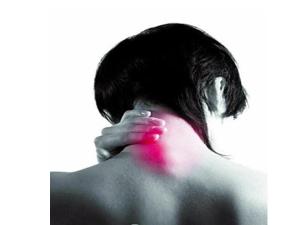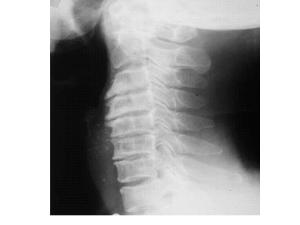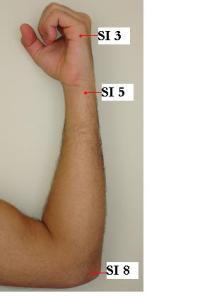News Letter, Vol. 2 (4), April, 2010, © Copyright
Jun Xu, M.D. Lic. Acup., Hong Su, C.M.D., Lic. Acup.
www.rmac.yourmd.com; www.drxuacupuncture.co
Rehabilitation Medicine and Acupuncture Center
1171 East Putnam Avenue, Building 1, 2nd Floor
Greenwich, CT 06878
Tel: (203) 637-7720
Cervical Spondylosis (neck pain)
Thomas W. is a 65-year-old man who woke up one morning with neck pain that appeared seemingly out of nowhere. He told his doctor the pain was extremely severe: a shooting pain that traveled downwards from his stiff neck to his shoulder blade. He was unable to move his neck forward or backward, and had trouble turning it from side to side. His condition made it dangerous for him to drive as he could not check for cars coming up beside him, and could not change lanes. The pain was constant, sometimes dull, sometimes sharp, but with no associated burning sensation, numbness or tingling in his arms. Occasionally, the pain radiated up to his scalp.
His primary care physician referred him to an orthopedic doctor. This doctor ordered an X-ray, which showed that Thomas had cervical spondylosis.
He was prescribed physical therapy as his sole treatment. He underwent physical therapy three times a week for five weeks, which alleviated the stiffness to some degree, but did nothing for the pain.
Thomas then came to me for evaluation and treatment.
Cervical spondylosis is a degenerative change that affects the spinal process, causing degeneration in the discs and joints between the vertebrae, i.e. arthritis in the neck. It usually affects people over the age of 40; men are more prone to cervical spondylosis than women. When the vertebral body and disc, as well as the different ligaments along the cervical spine, go through degenerative change, the patient gradually begins to experience neck stiffness. Those affected usually try to adjust their own neck functions and flexibility to the stiffness; however, at some point they will feel severe pain because their bodies can no longer accommodate the changes.
The severity of symptoms depends on the location of the degeneration. If the compression affects the discs and ligaments, the patient will feel stiffness and have a limited range of motion, with difficulty turning the head backward and forward, and difficulty looking over his/her shoulder. If the cervical nerve roots are compressed, inflammation and impingement of the nerve roots may result. The patient may feel neck pain radiating to the shoulder, arm and hands, associated with numbness, weakness, headaches, and urinary and bowel incontinency.
Western medicine treatments for Cervical Spondylosis:
- Cervical collars: to stabilize the neck, and prevent additional neck instability, which might lead to paralysis of the legs and/or arms, a doctor will usually prescribe a soft cervical collar. If a soft collar is not sufficient, the doctor may try a more rigid brace for the neck; however, these collars will restrict the patient’s range of movement of the neck and may, in the long run, exasperate the patient’s stiffness and pain further. Thus, this method is not very effective.
- Physical therapy: involves the use of a heating pad, electrical stimulation, ultrasound technology, massages, and cervical stretches. These treatments can often be very helpful to the patient.
- Surgery: if the above treatments do not work, surgery may be for the next best option. Surgery is based on the following criteria:
- The conservative measure of a cervical collar does not work.
- There is severe pain.
- There is significant neurological damage, such as difficulty in raising the arm, weakness, or bladder problems.
- There is a compression of the spinal cord.
There are two main types of surgery used to treat cervical spondylosis:
- Laminectomy: a spine operation to remove the portion of the vertebral bone called the lamina, which will release the pressure to the pinched nerves.
- Discectomy: a surgical removal of the central portion of an intervertebral disc, the nucleus pulposus, which causes the pain by stressing the spinal cord or radiating nerves.
Thomas underwent physical therapy and used a cervical collar. Though he felt some improvement, he was not cured. At this point, he consulted me for further treatment. I treated Thomas with the following traditional Chinese medicine method.
First, I applied a heating pad to the patient’s neck for 15 minutes. Then, I inserted the acupuncture needles at the: Hua Tuo Jia Ji points at the C4, C5, C6, and C7; Arshi points; Du 14 Da Zhui; LI 15 Jian Yu, LI 11 Qu Chi, SJ 5 Wai Guang, and LI 4 He Gu. I also used the small intestine meridian points, such as SI 3 Hou Xi, SI 5 Yang Gu, SI 8 Xiao Hai, SI 12 Bing Feng, and SI 11 Tian Zong to balance the energy of the entire upper extremity region.
Table 5-1
| Points | Meridian/No. | Location | Function/Indication | |
| 1 | Hua Tuo Jia Ji | ExperiencePoints | Cervical, thoracic and Lumbar sacral spine. See Pic 4-1 | Local neck, thoracic and low back pain |
| 2 | Arshi | ExperiencePoints | Any tender points in the body | Decrease the pain in any tender points of the body |
| 3 | Da Zhui | Du 14 | Below the spinous process of the 7th cervical vertebra, approximately at the level of the shoulders | Neck pain and rigidity, malaria, febrile diseases, epilepsy, afternoon fever, cough, asthma, common cold, back stiffness |
| 4 | Jian Yu | LI 15 | Antero-inferior to the acromion, on the upper portion of m. deltoideus. When the arm is in full abduction, the point is in the depression appearing at the anterior border of the acromioclavicular joint | Pain in the shoulder and arm, motor impairment of the upper extremities, rubella, scrofula |
| 5 | Qu Chi | LI 11 | See table 4-1/Pic 4-2 | See table 4-1 |
| 6 | Wai Guang | SJ 5 | 2 inches above Yangchi between the radius and ulna | Febrile diseases, headache, pain in the cheek, neck sprain, deafness, tinnitus, pain in the hypochondriac region, motor impairment of the elbow and arm, pain of the fingers, hand tremor |
| 7 | He Gu | LI 4 | See table 3-1/Pic 3-4 | See table 3-1 |
| 8 | Hou Xi | SI 3 | When a loose fist is made, the point is on the ulnar side, proximal to the 5th metacarjpophalangeal joint, at the end of the transverse crease and the junction of the red and white skin | Pain and rigidity of the neck, tinnitus, deafness, sore throat, mania, malaria, acute lumbar sprain, night sweating, febrile diseases, contracture and numbness of the fingers, pain in the shoulder and elbow. |
| 9 | Yang Gu | SI 5 | At the ulnar end of the transverse crease on the dorsal aspect of the wrist, in the depression between the styloid process of the ulna and triquetral bone | Swelling of the neck and submandibular region, pain of the hand and wrist, febrile diseases |
| 10 | Xiao Hai | SI 8 | When the elbow is flexed, the point is located in the depression between the olecranon of the ulna and the medial epicondyle of the humerus | Headache, swelling of the cheek, pain in the neck, shoulder, arm and elbow, epilepsy |
| 11 | Bing Feng | SI 12 | In the center of the suprascapular fossa, directly above Tian Zong. When the arm is lifted, the point is at the site of the depression | Pain in the scapular region, numbness and aching of the upper extremities, motor impairment of the shoulder and arm |
| 12 | Tian Zong | SI 11 | In the infrascapular fossa, at the junction of the upper and middle 3rd of the distance between the lower border of the scapular spine and the inferior angle of the scapula | Pain in the scapular region, and in the lateroposterior aspect of the elbow and arm, asthma |
Pic 5-1
Pic 5-2
Pic 5-3
Pic 5-4
The acupuncture was coupled with strong electrical stimulation, after which the patient was treated with ultrasound and massage. After six weeks of treatment, his neck function had improved greatly and he was able to turn his head while driving without difficulty. He therefore avoided surgery, and, while he still experienced minimal pain, the acupuncture alleviated his condition and strengthened the main function of his cervical spine.
Acupuncture alone cannot cure cervical spondylosis because degenerative changes of the cervical spine severely affect both ligaments and joints. For people over the age of 40, it is common for calcium to be released from the bones and begin circulating in the blood. This circulated calcium begins to affect the body’s joints, and if it reaches the cervical spine, it will cause cervical spondylosis and degeneration in the surrounding ligaments, discs and joints. After a while, the condition will restrict the neck’s range of motion. Acupuncture may help relieve some of the symptoms, mainly pain, but the physical degeneration cannot be reversed through this method.
Since this condition is ongoing, and can lead to difficulty in walking, numbness and tingling sensations in the arms and hands, weakness of the arms, and urinary tract incontinence, the earlier it is treated, the better. These symptoms can quickly worsen, causing permanent loss of nerve function; in this case, surgery will be absolutely necessary.
Tips for acupuncturists:
- Always apply a heating pad to the patient’s neck for about 15 minutes before inserting the acupuncture needles. The heating pad will improve the energy circulation.
- Hua Tuo Jia Ji is a group of excellent acupuncture points; you should always use it when treating patients with neck pain.
Tips for patients:
- You may use a heating pad at home to help with the healing.
- You may adjunct the acupuncture treatment with massages and range of motion exercises for your neck.







4 comments
tripplex5663
February 2, 2011 at 8:12 pm
Excellent post. I want to thank you for this informative read, I really appreciate sharing this great post. Keep up your work. Loveland CO Chiropractor Loveland CO Chiropractic
Dr A. K Anand Delhi India
May 12, 2011 at 12:30 pm
Its a nice presentation but some patients donot respond to acupuncture ,can you elaborate
Augusta
July 30, 2012 at 10:18 pm
Thank you, I have recently been searching for info about this subject for a long
time and yours is the best I have came upon so far. However, what
concerning the conclusion? Are you sure concerning
the supply?
drxuacupuncture
January 25, 2013 at 8:59 pm
Thank you for your comments.
Best,
Jun Xu, MD